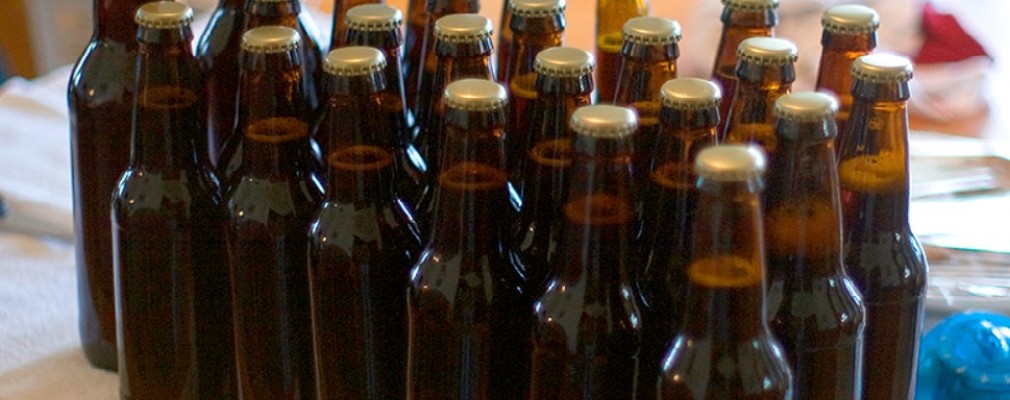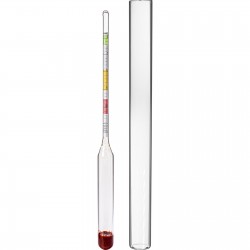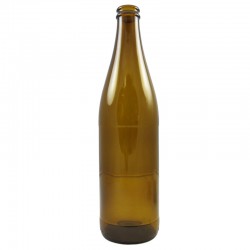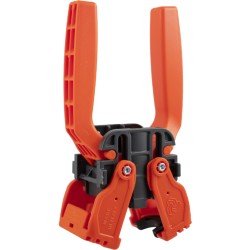Is the beer ready to be bottled? This is one of the most frequently asked questions by novice brewers. We will try to answer them to indicate the optimal moment for bottling our home-made beer, so that it retains all its taste qualities and is properly carbonated in the bottles.
 Usually, in the background of this question, there are doubts whether it is too early for the bottling, or maybe in a few days it will not be too late and what impact this may have on my beer.
Usually, in the background of this question, there are doubts whether it is too early for the bottling, or maybe in a few days it will not be too late and what impact this may have on my beer.
The most important condition for bottling beer is completed fermentation, i.e. yeast processing sugar into alcohol. This fermentation step is referred to as first fermentation. If we bottle the beer that is still in this phase, the sugar in the wort will be fermented in the closed bottle, as a result of which the beer will be carbonated, and the bottle may even burst. Therefore, in order to correctly assess the stage of fermentation, we measure the sugar level in the wort with a hydrometer. If this level has not changed within 48 hours, we assume that the turbulent fermentation is complete and the sugars are fermented. Theoretically, such beer can already be bottled. However, it is worth extending the first fermentation for a few days, when it enters the silent secondary fermentation stage.
One of the goals of secondary fermentation is to purify young beer of undesirable yeast-produced compounds. These include, among others, acetaldehyde, which is the main culprit of alcohol intoxication, or "hangover", and diacetyl, which is responsible for the buttery aftertaste of beer. During silent fermentation, yeast reduces the presence of these compounds in the beer. For effective reduction of diacetyl, it is worth raising the fermentation temperature by 2-3 degrees for about 2 days.
Another purpose of silent fermentation is to clarify the beer prior to bottling. For this purpose, the temperature of young beers is often lowered below 10 ° C, thanks to which the particles suspended in it fall more easily to the bottom of the tank.
Silent fermentation is also a stage during which we add various additives to the beer, such as: hops, oak flakes, coffee, etc.
Do you pour beer into another fermentor for silent fermentation?
Beer should be poured into silent fermentation if we want to obtain a yeast thicket - it should be harvested immediately after turbulent fermentation. Also, in the case of the assumed long aging in the fermenter (more than 2-3 weeks), it is recommended to separate the beer from the slurry in order to avoid undesirable yeast aromas.
In other situations, it is not necessary to pour the beer into silent fermentation.
 Is the beer in the fermenter too long?
Is the beer in the fermenter too long?
It will be much more inappropriate and dangerous to spill the beer too early. Keeping it in the fermenter during the silent fermentation stage has no noticeable negative effects. Provided that it is not an excessively long period. We can assume that up to 30 days will be safe for our beer. Of course, on the condition of maintaining the right conditions - clean, temperature, without exposure to the sun.
The exception are beers with aromatic additives used for silent fermentation. Hops kept in beer for more than 7 days will already give the beer an unpleasant grass-stem aroma.
To sum up, we can bottle the beer when we are sure that the turbulent fermentation is finished. Its duration depends on the strength of the beer, fermentation temperature, and the strain of yeast used. Sometimes it may be several days, sometimes 2-3 weeks. For better taste properties of beer, it is worth extending the turbulent fermentation with silent fermentation, usually lasting 7-10 days.




























Dodaj komentarz
0 komentarze